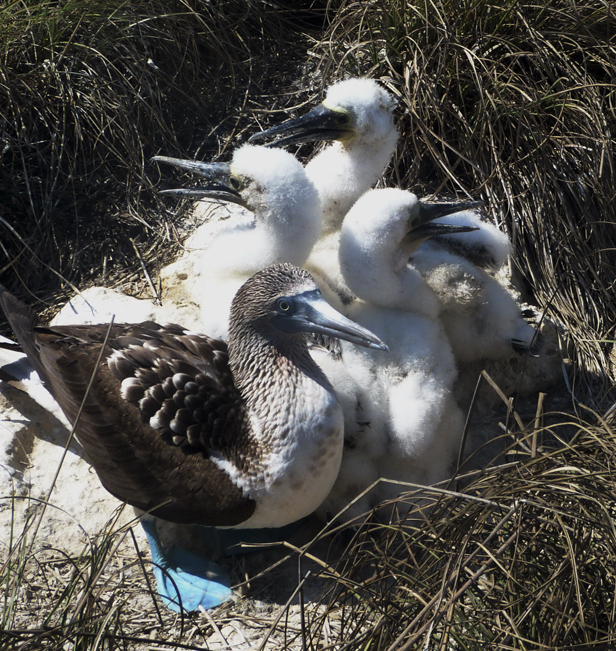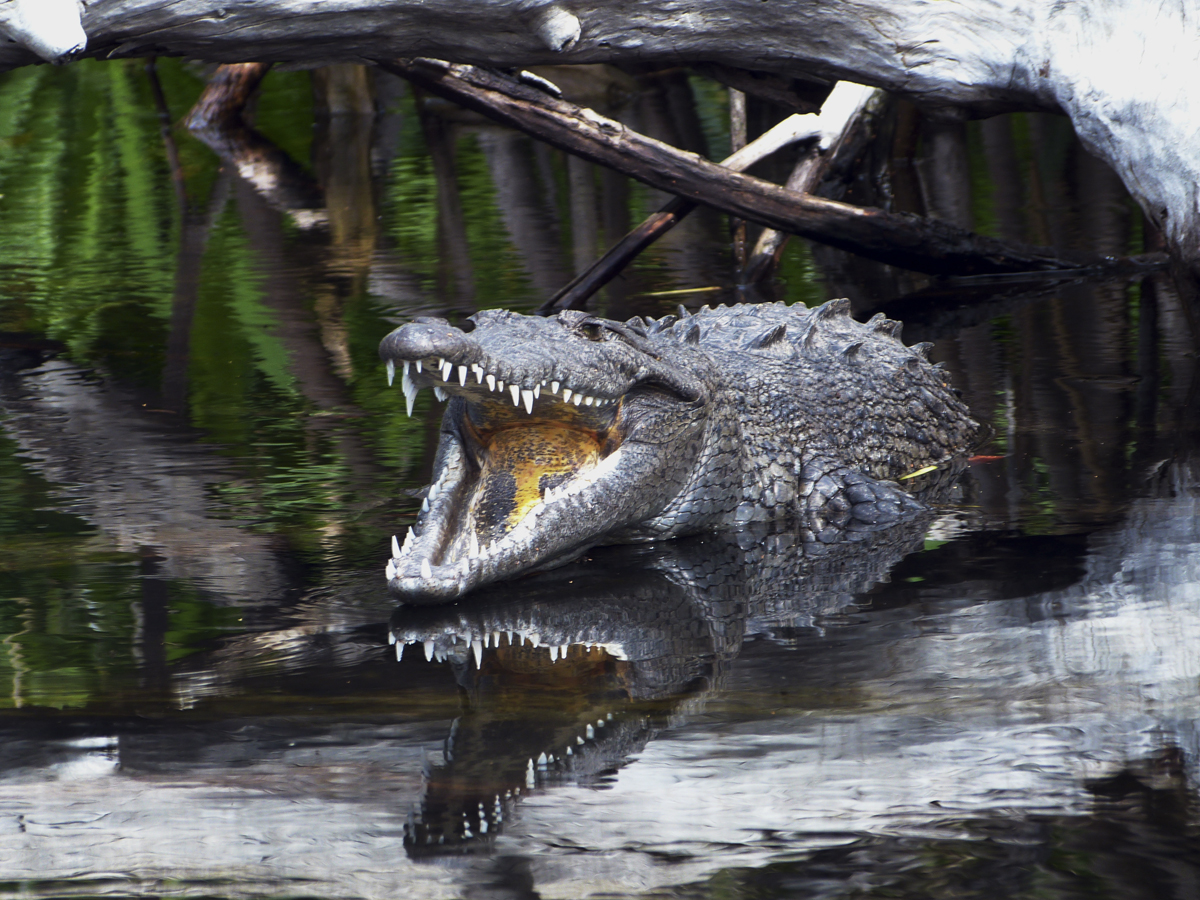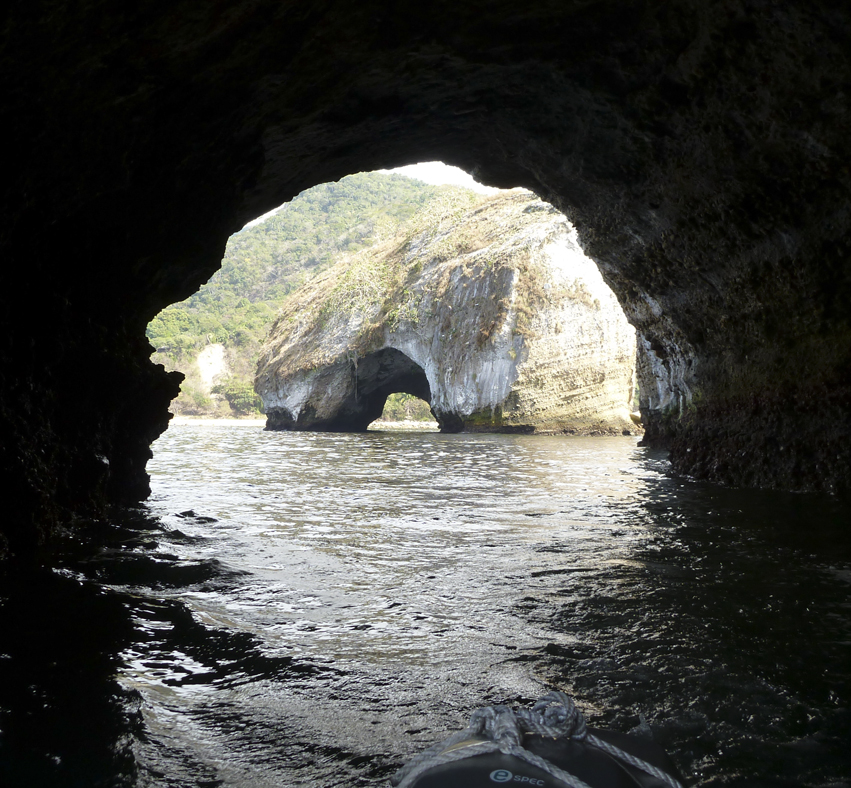Published in the Ocean Watch column, Honolulu Star-Advertiser © Susan Scott
March 5, 2012

A blue-footed booby stands near its offspring at Tres Marietas.
My sailing trip along Mexico’s Pacific coast is nearing its end. It was not what I expected.
Take the crocodiles of San Blas. This small town lies at the mouth of an estuary and hosts a sanctuary, the advertising said, for the area’s wild crocodiles.
Do they mean alligators? I wondered. Or caimans? The fact that crocodiles are native to Mexico was news to me, and even as I boarded a small tour boat to check it out, I had my doubts.
But crocs they were, from cute little babies to big toothy males, all sunning themselves on mud banks and fallen branches.
Growing to 20 feet long, Mexico’s largest crocodiles, scientific name Crocodylus acutus, rival Australia’s oceangoing salties in length and bulk. The crocodiles here, though — natives of south Florida, some Caribbean islands and Central and South America — are fresh- and brackish-water creatures that don’t swim to offshore islands.

I did find potentially deadly organisms around some islands, though, but on the opposite end of the size scale. These creatures are so small you can’t see one with the naked eye, but billions drifting together are quite a sight.
As we approached Los Arcos, several national park islands with drive-through caves below and nesting pelicans above, the water turned a creepy red, as if a massacre had occurred. But there was no violence here. I was seeing my first red tide.

Red tides have nothing to do with tides and aren’t always red. A burgundy, yellow or brown water color occurs when planktonic organisms called dinoflagellates get a boost of nutrients and reproduce like crazy.
When concentrations get high enough, the organisms’ metabolic toxins kill birds, fish and invertebrates. Often, though, the blooms are dilute enough to do no harm.
That seemed to be the case here, where the red ran in ribbons narrow enough for Craig to dive beneath. So dense was the growth that when treading water he couldn’t see his waist.
Craig felt compelled to swim in that red soup, but I saved my energy for animals I could adore. At another island group called Tres Marietas, famous for blue-footed booby colonies, we scrabbled our way up a rough lava pinnacle. At the top of the cliff sat the highlight of my trip: a friendly mother with swimming-pool-blue feet and triplets.
I knew that blue-footed boobies sometimes laid three eggs, but thought that only the strongest hatchling survived. Here, though, were three healthy offspring well on their way to fledging.
At the mention of Mexico, forget the bleak images of drug wars and desert wasteland. Here on the Mexican Riviera, the residents are friendly, tourism is booming and the wildlife is amazing.
©2012 Susan Scott